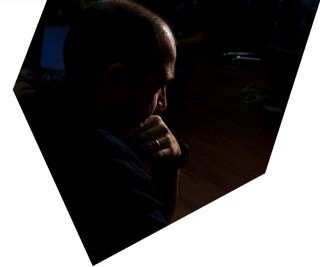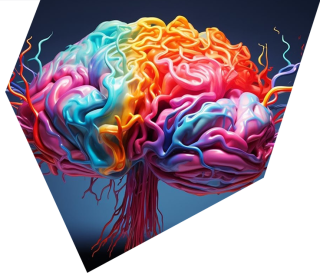
The Untapped Genius of Artemis: Why Your Organisation Needs to Think Wildly
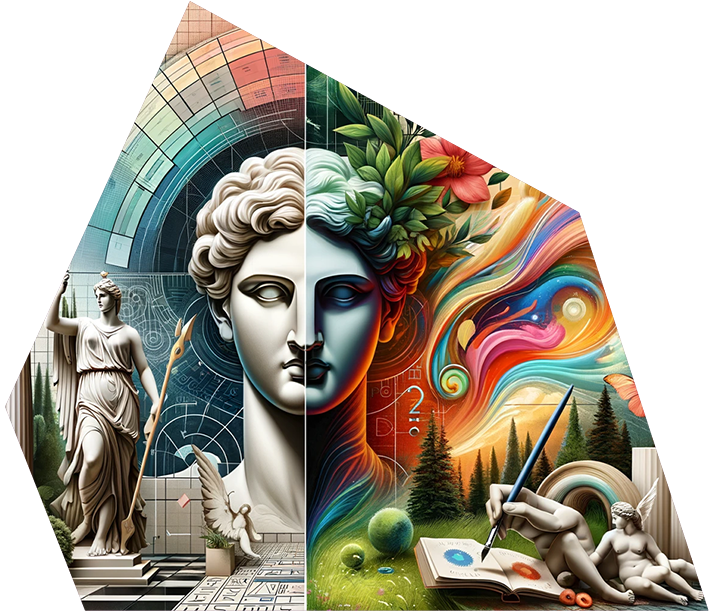
If you forgive the travel into Greek mythology for a moment, I'd like you to meet Apollo and Artemis. Two symbols that stand as a profound contradiction. Apollo, the god of reason, logic, and order, contrasts sharply with his twin sister Artemis, the goddess of the wild, creativity, and intuition. A distinction I remember well through my studies of art history, just as much as in the shaping of contemporary culture.
This same metaphor extends into the modern world, where Apollo stands at the helm of those concrete traditional, data-driven approaches, where dark suits, jackets and serious faces abound; while Artemis embodies a more fluid, imaginative, and boundary-defying way of thinking, traditionally paired with converse sneakers and a t shirt. But should they be?
In a world brimming with Apollonian logic, there lies a largely uncharted territory - a place where creativity reigns and conventional boundaries dissolve.
Welcome to the Artemisian Blueprint.
Where right-brain thinking meets strategic prowess, offering an innovative lens through which to view and solve complex challenges across diverse sectors, from Defence to sustainability, and beyond.
Why Artemis? Why Now?
The goddess is untamed, the wild essence of creativity and the unbridled potential of imagination. In a business context, this translates to a daring approach that doesn't just push the envelope but reimagines it entirely. A risk some fear to face.
Imagine a strategy meeting in a national security context, where instead of traditional risk assessments and tactical discussions, someone brings in a narrative designer from a leading video game company.
Absurd?
Not in the Artemisian world. Here, the designer's understanding of storytelling, virtual environments, and engaging the audience can offer fresh perspectives on tactical training and simulation. It's about stepping out of the echo chamber and inviting the unconventional into the conversation.
In addressing climate change, the Artemisian Blueprint doesn't just lean on data and doom-laden projections. It's about harnessing the power of boundary-less perspectives that not only informs but emotionally resonates, driving toward action and change through unexplored territories.
Similarly, in the fintech and insurance sectors, this blueprint challenges the norm. It's not just about algorithms and actuarial tables; it's about understanding the human story behind the numbers. It's about reimagining customer experience, blending technology with empathy - creating systems that don't just process claims but understand the stories behind them.
It's about seeing the problems that aren't visible, the upside-down mirror images, and the titled head view of the world to see a perspective that has always been there - you just hadn't looked for it.
In public policy, for example, applying this blueprint might mean looking at social problems through the lens of behavioural science and psychology. Seeing where policies should be focussed in entirely new areas, with new approaches by understanding that everything is fictional, and therefore changeable. Where traditional obstacles dissolve because we collectively chose for them to do so.
In a world that's increasingly homogenised, the ability to think differently isn't just nice - it's essential.
Businesses, government departments, agencies, and organisations that adopt this mindset are more likely to innovate, to lead, and to inspire.
The Artemisian model challenges these norms, suggesting that a creative, less conventional approach could be the key to overcoming current limitations.
As a starting point - here are a few pitfalls to avoid with traditional thinking:
- Over-Reliance on Data Analytics: Missing the Human Element
- Traditional models often lean heavily on data analytics, but this approach can miss the nuanced, human elements of business. A study found that 61% of CEOs globally are concerned about the lack of creativity and innovation within their industries.
- Example: Blockbuster's downfall was partly due to an over-reliance on data and underestimation of emerging consumer trends, leading to their failure to adapt to the streaming model pioneered by Netflix.
- Linear Problem-Solving: Ignoring the Power of Divergent Thinking
- The Artemisian model promotes divergent thinking, a concept supported by the creativity research like that of psychologist J.P. Guilford. Linear problem-solving methods can limit innovation solutions, whereas embracing creative thinking can uncover unconventional yet effective strategies.
- Example: SpaceX's approach to reusable rockets was initially dismissed by traditional aerospace players but has since revolutionised the industry.
- Hierarchical Structures: Stifling Creativity and Adaptability
- Rigid hierarchical structures often stifle creativity and adaptability. Companies like Google and IDEO have adopted more fluid, team-based structures to foster innovation, as suggested by Linda Hill in her book "Collective Genius."
- Example: Valve Corporation's flat structure empowers employees to work on projects that interest them, leading to innovative products like the Steam gaming platform.
- Risk Aversion: The Enemy of Breakthrough Innovation
- Traditional business models often prioritise short-term gains and risk aversion. However, as highlighted in Clayton Christensen's "The Innovator's Dilemma," this can prevent companies from pursuing disruptive innovations that could ensure long-term success.
- Example: Kodak's hesitation to pivot fully to digital photography, despite inventing the digital camera, led to its decline as digital technology revolutionised the industry.
- Undervaluing Intangible Assets: The Hidden Drivers of Value
- Traditional models often focus on tangible assets, but intangible assets like brand reputation, intellectual property, and employee talent can be significant drivers of value. A study by Ocean Tomo shows that intangible assets account for over 90% of the S&P 500 market value.
- Example: Apple's brand and design-centric approach have made it one of the most valuable companies in the world, despite not having the largest sales volume
- Silos in Strategy: Missing Cross-Functional Synergies
- Traditional models often operate in silos, but cross-functional collaboration can lead to more holistic and innovative solutions. The Artemisian model encourages breaking down these barriers.
- Example: Pixar's 'Braintrust' concept, where diverse teams collaborate on movie projects, has led to a string of successful films and innovative storytelling.
- Overemphasis on Competitor Analysis: Losing Your Unique Voice
- While understanding competition is important, obsessively focusing on competitors can lead to imitation rather than innovation. The Artemisian model suggests looking inward to understand unique strengths and values.
- Example: Tesla's focus on its mission rather than direct competition has helped it become a leader in electric vehicles and renewable energy - regardless of what you think of Elon Musk (cards on the table - not a fan).
The Artemisian model isn't just a theoretical approach; it's a necessary paradigm shift for businesses aiming to thrive in today's rapidly evolving landscape.
By embracing creativity, human-centred design, and bold thinking and strategy, businesses can avoid the pitfalls of traditional models and pave the way for ground-breaking innovation and long-term success.

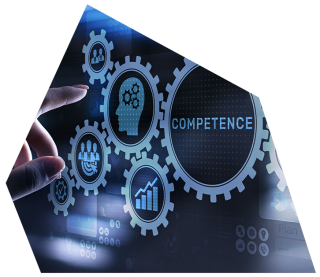
Capacity, capability and competency
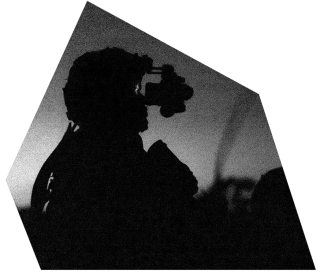
Mind the gap: Bridging generations in defence strategy
